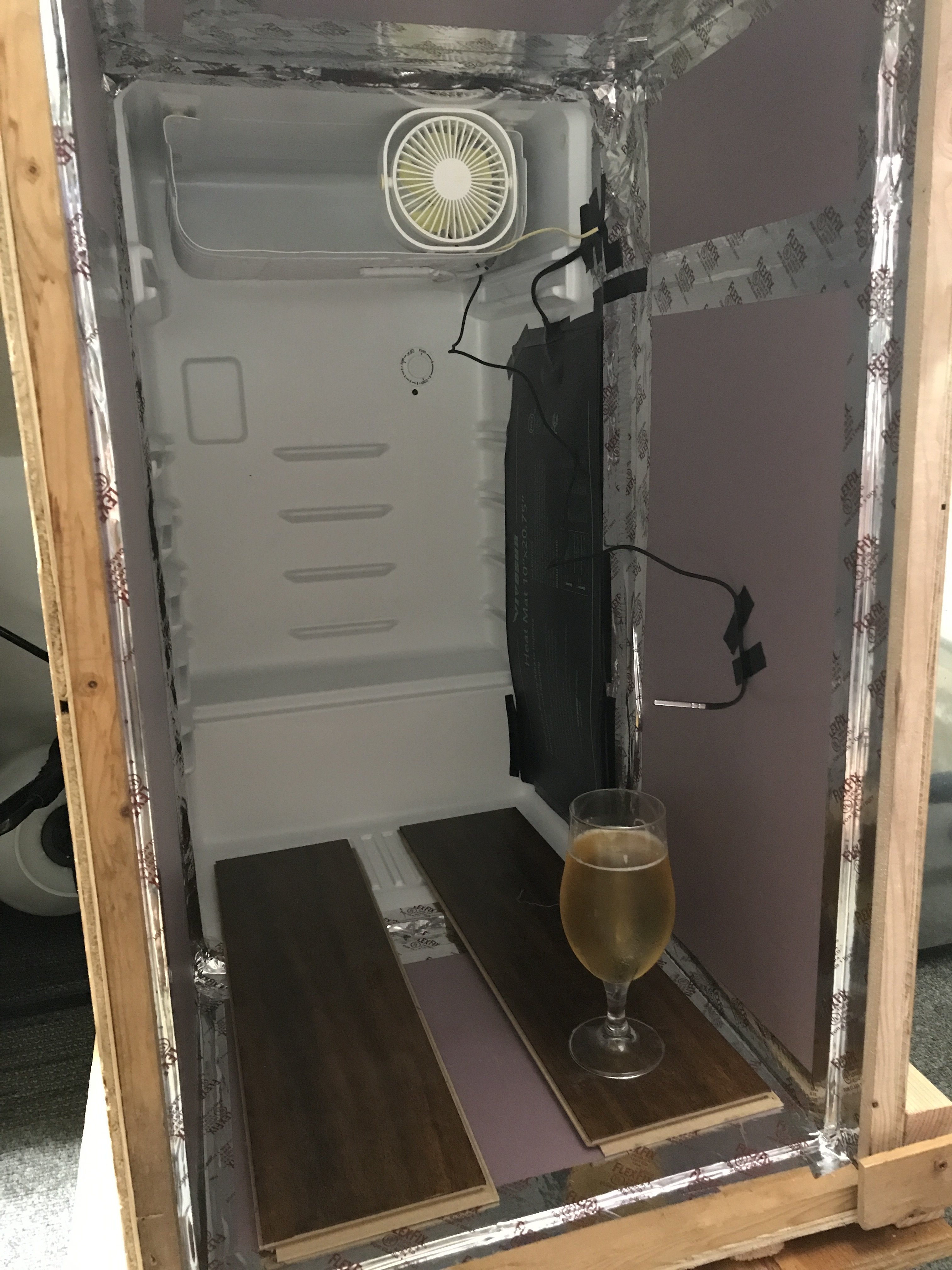ChiknNutz
Well-Known Member
After getting advice on controlling fermentation temps as being a primary next goal, I set off to build an FC. After striking out on inexpensive chest freezers and then deciding that a front load apparatus would be preferable, I went ahead and built one using a used mini fridge. The first pic shows the temp it got down to after setting it to the max and leaving it for a few hours. As you will likely note, it is highly overbuilt, structurally. That's just how I do things. I find it hard to scale back to a 2x2 when a 2x4 is there and I don't have to rip it down, so on and so forth. Anyway, I used 2" rigid foam (which is actually 1-3/4" thick). The only real challenge was adjusting for the difference in height between the floor of the fridge and where the floor of the FC landed. It wasn't overly difficult, just something I had to adjust for thru the build. Overall, it is 4' long x about 2' deep x about 3' tall. Inside it is right about 18" deep and so allows for 1" front to back between my new Kegmenter, which I plan to use as my main fermenter. I made it long enough so it could hold two of those if I wanted, but only have the one for now. It is heated with a fermentation heat pad off of Amazon and controlled via an Inkbird 308 WiFi controller. I don't envision needing the heat but it's there nonetheless.
Question...the default setting for the Inkbird allows for a 3 degree delta, I think I've seen others change this to be 1 degree...is that what most do for these? Any other things to note or change about the Inkbird?
One thing I left out, was a small computer fan. I had planned to put one in, then forgot to order it and went off on the build anyway. Easy enough to add later of course, just something I saw on another build, but not sure how necessary it is.
Question...the default setting for the Inkbird allows for a 3 degree delta, I think I've seen others change this to be 1 degree...is that what most do for these? Any other things to note or change about the Inkbird?
One thing I left out, was a small computer fan. I had planned to put one in, then forgot to order it and went off on the build anyway. Easy enough to add later of course, just something I saw on another build, but not sure how necessary it is.
Attachments
-
 IMG_1748.JPEG436.8 KB · Views: 214
IMG_1748.JPEG436.8 KB · Views: 214 -
 IMG_1749.JPEG754.1 KB · Views: 217
IMG_1749.JPEG754.1 KB · Views: 217 -
 IMG_1750.JPEG776.5 KB · Views: 202
IMG_1750.JPEG776.5 KB · Views: 202 -
 IMG_1751.JPEG723.6 KB · Views: 204
IMG_1751.JPEG723.6 KB · Views: 204 -
 IMG_1752.JPEG716.4 KB · Views: 197
IMG_1752.JPEG716.4 KB · Views: 197 -
 IMG_1753.JPEG1.6 MB · Views: 206
IMG_1753.JPEG1.6 MB · Views: 206 -
 IMG_1756.JPEG1.8 MB · Views: 211
IMG_1756.JPEG1.8 MB · Views: 211 -
 IMG_1757.JPEG593 KB · Views: 205
IMG_1757.JPEG593 KB · Views: 205 -
 IMG_1759.JPEG2.8 MB · Views: 212
IMG_1759.JPEG2.8 MB · Views: 212 -
 IMG_1760.JPEG2.7 MB · Views: 214
IMG_1760.JPEG2.7 MB · Views: 214
Last edited:



